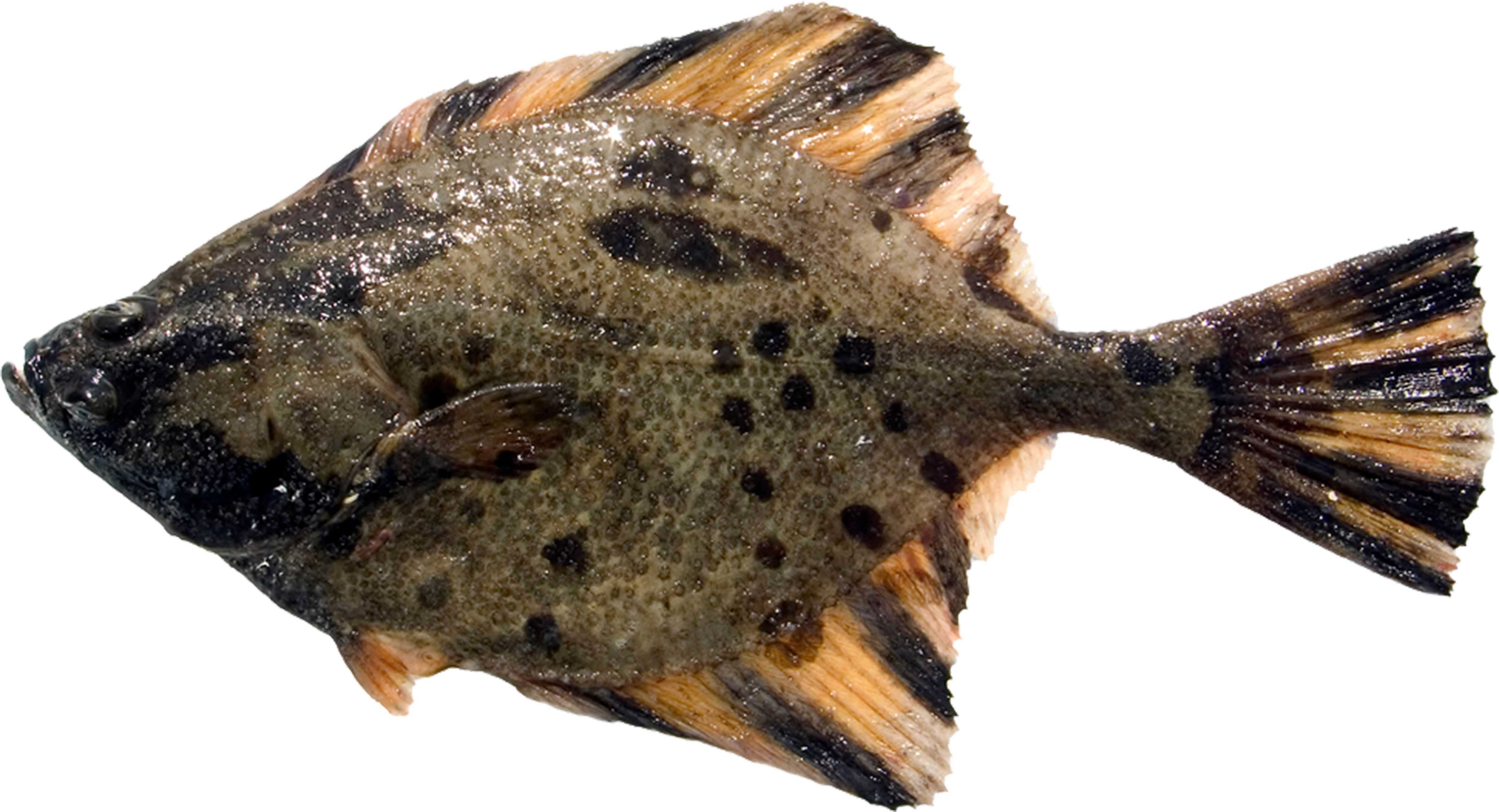Starry Flounder

Species Details
Platichthys Stellatus
Pleuronectidae
Pleuronectiformes
Bays, Lagoons, Rivers, Harbors
1 - 3 lbs.
12" - 36"
Starry Flounder (Platichthys Stellatus) Fish Description
Like its other Flounder cousins, the Arrow, Southern, and the Summer Flounder, the Starry Flounder is a flat fish. However, the biggest difference of the Starry Flounder could be found in its skin pattern. While the Arrow, Southern, and the Summer flounders appear to be monochromatic (save for the three black spots found on the Southern Flounder), the Starry Flounder has black bars on its dorsal and anal fin. The bars can range from being black or white to orange. True to its name, the Starry Flounder also has star-shaped scales which give it a rough texture. Its belly side is cream white.
Their tail fins look similar to a large paint brush; square and short. It also has a strong anal spine which it relies on for swimming. The Starry Flounder also has short pectoral fins but appears to have no accessory dorsal branch.
Starry Flounder Diet and Size
Starry Flounders are bottom, filter feeders. They are the kind of fish that lie in the sand and wait for the food to float down to them. Juvenile Starry Flounders feed on plankton but as they grow older, Starry Flounders begin to feed on clams. What Starry Flounders do is the siphon but sucking up water to get the food in.
Starry Flounders’ size is usually dependent on their weight. Commercial markets sell Starry Flounders at around 2 lbs but some have reported Starry Flounders weighing at 15 lbs. The heaviest ever recorded was at 19 lbs (around 9 kgs).
Interesting Facts about the Starry Flounder
- Starry Flounders can change color!
- Depending on where they are, Starry Flounders can change colors. They have pigments known as chromatophores which allow them to adjust depending on where they are.
- Starry Flounders don’t swim. They often glide or propel.
- The definition of “swimming” is often depicted with a fish cutting through the water vertically.
- Flatfish such as the Starry Flounder rely more on their Anal Spines which propel them through water, making them look like as if they are gliding.
- While young, however, Starry Flounders swim vertically before they slowly tilt to their side as they get older.
- Starry Flounders can swim backward!
- Most fish usually have to turn tail but Starry Flounders can go in reverse using the rays in the dorsal fin to create a paddling motion.
- Starry Flounders and probably most of its kin are enjoyed as food.
- Flounders in general are known for their soft meat.
- Talented chefs often say that the hardest part about filleting a Flounder is from the backside. Unlike the front where one can see a lateral line, their bellies have no mark so usually, it’s a matter of instinct and relational measurement.
- They are commonly distributed as Sole Fish.
- Starry Flounders can live up to 24 years for males, 17 years for females.
Starry Flounder – Fishing Techniques: How to Fish for a Starry Flounder
When fishing for a Starry Flounder, most Flounder (or Fluke) anglers recommend using live bait. Live bait can include shrimp, crabs, smaller flounder (turns out they’re cannibalistic!), shad, sardines, and mud minnows. As for the hook size, anglers recommend using either large hooks since some of these Starry Flounders can have large teeth. Circle hooks or worm hooks ought to the trick.
Next, take note of the time. Usually, the best time to fish for Starry Flounder is during Spring. Every Winter, the Starry Flounder flee from the Pacific Ocean waters to spawn in coasts, inlets, bays, and lagoons. Look for bays with water bodies that have fresh water running in. That’s one thing to look at. Make sure it also has a muddy bottom; Starry Flounders often hide there.
Once there, cast your line. But make one turn of the reel every now and then; don’t completely reel it back. Your objective is to indulge the Starry Flounder’s nosy personality which they’ll soon snap up and bite. When they do snap, don’t reel it in right away. Let the reel run and the Starry Flounder fight you before completely reeling it up.
Starry Flounder Habitat and Distribution
Starry Flounders prefer muddy and sandy habitats, particularly that have gravel. They usually stay at around 375 meters but can be found loitering at around 146 meters below the surface. Starry Flounders, especially after winter, can be found inshore and at bays. Some even say that they also are okay with freshwater rivers and lagoons.
Although they have a tolerance for brackish water, they prefer staying away from saltwater bodies due to their inability to keep the salt out of their cells.







